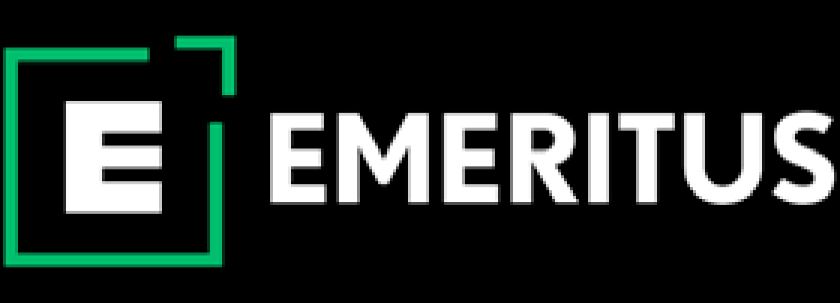UI Vs. UX: Difference Between UI and UX Design

For a layperson, UI and UX might seem like a complex computer language, but for designers, they are a crucial part of the designing process. While UI refers to the visual elements like buttons, toggles, and icons a user comes across on a website, UX refers to the physical appearance, design, colour, and everything that affects a user’s interaction with a digital product. Although UI and UX design may seem similar, they are two different concepts.
In this article, we will delve deep into the meaning of UI & UX design and the difference between them.
What is UI Design?
User Interface (UI) design takes care of the aesthetics of a digital product. It ensures that the look and feel of the product are aesthetically appealing and bridges the gap between humans and technology.
For instance, on any website, the buttons you click, the text written on the website, the colour of the text or the symbols used are all a part of the UI design.
What is UX Design?
User experience or UX design refers to creating products that provide users with meaningful and relevant online experiences. It involves the process of acquiring, integrating, branding, and designing a product. UX design’s primary aim is to include elements that ensure smooth user interaction.
UI vs UX: What is the difference between them?
At first, UX and UI might seem like similar concepts, but when you delve deeper, you realise these are two distinct concepts. Here’s the significant difference between UI and UX.
| USER INTERFACE | USER EXPERIENCE |
| User interface design contains elements that enable users to interact with a product or service. | User experience contains elements that ensure the user’s smooth and productive interaction with technology. |
| UI focuses on the visual elements of the product, website, or app. | UX focuses on the intangible elements of a digital product. |
| User interface design acts as a bridge between the user and the technology. | User experience design is a part of the product or technology the user interacts with. |
| User interface design is not the initial step in the product development process. | User experience is generally the initial step in the product development process. |
| User interface deals with a product’s interface and appeal. It uses different interactive elements across various platforms to offer a visually appealing product, service, or website. | User experience deals with research, development, testing, content, prototyping, and testing of products, websites, or services. |
| User interface design is based on the user’s needs and research. | User experience is based on the client’s needs and requirements. |
UI Designer VS UX Designer: How are they different?
Here we closely look at how UI and UX designers are different from one another.
Task and responsibilities
UI and UX play a vital role in product development. While UI overlooks all the elements that enable interaction between a human and a product or service, UX is what the individual takes away from their interaction with the product or service.
Here are the responsibilities of UI designers:
- Choosing colour palettes and fonts
- Designing interactive elements such as scrollers, buttons, toggles, drop-down menus, and text fields
- Work with developers to convert a design into a working product
Here are the duties of UX designers:
- Conducting user testing to validate design decisions and identify problems
- Building prototypes to get an idea about how the final product will look like
- Developing user personas based on target customers
Product Management Courses
Skills
UI and UX designers have a few skills in common, but each role requires a unique blend of soft and hard skills that can be acquired on-job or through upskilling. Here’s a close look at the skills needed by UI and UX designers, respectively.
Here are the skills required by UX designers:
- Product strategy
- User research
- Information architecture
- Testing and iteration
- Team management
- Communication skills
Here are the skills required by UI designers:
- Colour theory
- Typography
- Design patterns
- Interactivity and animation
- Interpersonal skills
- Intuitiveness
Meanwhile, skills like empathy, collaboration, design thinking, and prototyping are required by both UI and UX designers. If you want to develop a career in product management, then taking an advanced certificate course will equip you with the necessary skills and knowledge.
You can enrol in Emeritus India design thinking and product management certification programmes. These online courses have a comprehensive learning curriculum that prepares you to identify customers’ needs and design excellent customer experiences.
Our programmes are offered in partnership with prestigious institutes like IIM, ISB, and IIT.
Education
Although a degree isn’t always necessary to get a UX and UI designer job, having one can open doors to new and exciting opportunities. Aspiring UX designers can start their careers with computer science, psychology, human-computer interaction, or design degrees. Meanwhile, aspiring UI designers can graduate with a degree in digital format, graphic design, or interaction design.
Salary
UI and UX designer salaries in India range between INR 2,10,000 to INR 15,00,000 per annum. Your salary depends on many factors, such as location, industry, work experience, and educational qualification. (Source)
What are the career prospects for UI and UX Designers?
In the last few years, the design industry has steadily increased jobs. As a result, numerous positions are now open to anyone with the right skill and experience, from graphic designers to UI designers. Among them is UI and UX design, rated as one of the trending skills by industry leaders.
The advent of technology and AI has led to an increase in mobile applications and websites. In turn, creating more opportunities for UI and UX designers. So, if you wish to pursue a career in UI and UX design, this is the right time to grab the opportunity.









